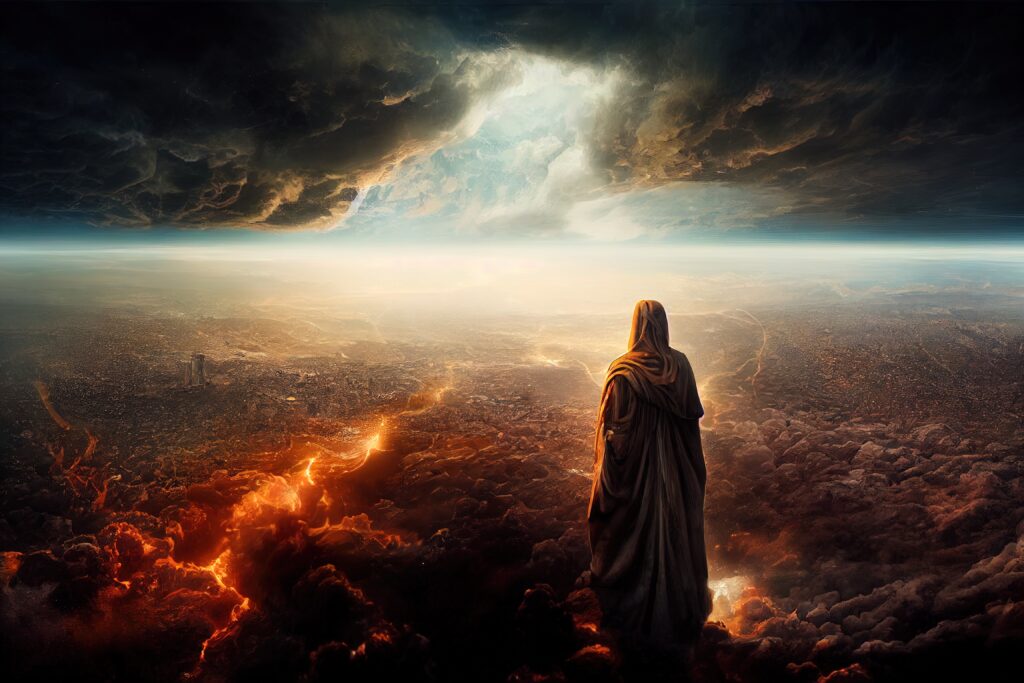
Like a Giant Windmill.
“Then one of the seven angels who held the seven bowls containing the seven last plagues came and said to me, “Come with me! I will show you the bride, the wife of the Lamb.” So he took me in the Spirit to a great, high mountain, and he showed me the holy city, Jerusalem, descending out of heaven from God. It shone with the glory of God and sparkled like a precious stone—like jasper as clear as crystal. The city wall was broad and high, with twelve gates guarded by twelve angels. And the names of the twelve tribes of Israel were written on the gates. There were three gates on each side—east, north, south, and west. The wall of the city had twelve foundation stones, and on them were written the names of the twelve apostles of the Lamb. The angel who talked to me held in his hand a gold measuring stick to measure the city, its gates, and its wall. When he measured it, he found it was a square, as wide as it was long. In fact, its length and width and height were each 1,400 miles(2220 KMS) Then he measured the walls and found them to be 216 feet thick (65mtrs) (according to the human standard used by the angel). The wall was made of jasper, and the city was pure gold, as clear as glass.” – Revelation 21:9-17
If we are not careful, we might get the impression that the beasts, the vultures, the darkness, the earthquakes, and the hailstones are what the book of Revelation is all about. The true centrepiece of the book of Revelation is not war or catastrophe, it is not the Middle East, it is Jesus Christ and Him crucified.
One would expect that the arrival of the New Jerusalem would be an event in its own right. The enormous size, the radiance, the unusual shape could easily be the centrepiece of the story. But this book is the revelation of Jesus Christ. So the New Jerusalem is no ordinary city. It is the bride, the wife of the Lamb. Even the New Jerusalem is not allowed to distract from the overwhelming focus on Jesus.
To read this book without gaining a clearer picture of Jesus is to miss the key point.
The Bible is like a gigantic windmill that has slowly moved in a very large cycle: it begins with a beautiful place of safety and security (Genesis 1-2); then sin, doubt, and disobedience come in (Genesis 3); then there is the story of sin and disobedience from the beginning (Genesis 3) to the end (Revelation 20). The New Jerusalem narrative is an attempt to describe the peace, security, and safety that will be in place after sin is destroyed (Revelation 21). The Bible is a complete picture, but it would not be complete without Revelation, nor would Revelation be complete without these last two important chapters.
We have previously asked the question: is the New Jerusalem a literal city like cities today? Or is it a symbol of an indescribable reality? Something real described in a symbolic way. If it is like ancient Jewish pictures of the glorious future, it is more symbolic than literal. As we have noted it is described as a cube and therefore represents the most Holy place of the sanctuary, which was God’s dwelling place on earth. The images are those of the author’s time and place, but the central theme is clear. Everything that human beings have hoped and dreamed for is attained, not by human effort, but in relationship with the Lamb. And that relationship begins now. The vision of the future New Jerusalem keeps our minds and hearts focused on the one thing that really matters now. Eternity.
